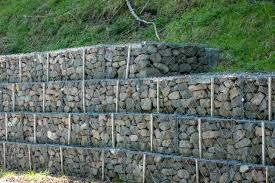-
 Phone:
Phone: -
 Email:
Email:

rockfall protection netting
Rockfall Protection Netting A Critical Solution for Landslide and Rockfall Management
Rockfalls pose a significant threat to infrastructure, ecosystems, and human safety, particularly in mountainous regions. The unpredictable nature of rockfalls, along with their potential to cause catastrophic damage, necessitates effective mitigation strategies. One of the most effective solutions in this domain is rockfall protection netting. This innovative technique is essential for safeguarding roads, tunnels, and structures against falling rocks, thereby ensuring the safety and stability of these vulnerable locations.
Understanding Rockfall Protection Netting
Rockfall protection netting consists of high-strength mesh systems designed to capture and contain falling rocks and debris. The netting is typically made from materials such as steel or specialized synthetic fibers, which provide the durability and strength needed to withstand heavy impacts. These systems can be installed on slopes, cliffs, or other susceptible areas to create a barrier that prevents loose rocks from tumbling down.
How it Works
The installation of rockfall protection netting involves several crucial steps
. First, an extensive geological assessment is conducted to determine the risk levels associated with specific slopes or rock faces. Based on this assessment, engineers will design a netting system tailored to the specific conditions, including factors such as slope angle, rock size, and local weather patterns.Once the design is finalized, the netting is anchored securely to the ground, ensuring it can absorb the energy of falling rocks. The mesh itself is typically installed in a series of layers, which enhances its ability to catch debris of varying sizes. In some instances, additional support systems such as rock bolts or cable systems may be employed to enhance stability and increase the net's effectiveness.
rockfall protection netting

Benefits of Rockfall Protection Netting
The installation of rockfall protection netting offers several significant benefits. Firstly, it dramatically reduces the risk of injury or fatality associated with rockfalls, protecting both motorists and pedestrians in affected areas. Secondly, it minimizes damage to infrastructure, which can save municipalities and organizations considerable costs in repairs and maintenance. Furthermore, by preventing erosion and destabilization of slopes, rockfall netting plays a role in preserving the ecological integrity of slope areas, nurturing the local flora and fauna.
Case Studies and Applications
Across the globe, rockfall protection netting has proven effective in various settings. In Europe, for example, countries like Switzerland and Austria have implemented large-scale netting systems along highways to protect transport routes from falling debris. In North America, similar systems have been deployed in national parks and mountain regions where rockfalls are a known hazard. The continued success of these projects has inspired further research and advancements in rockfall protection technology, enhancing the effectiveness of netting systems and encouraging their adoption in new areas.
Conclusion
As the impact of climate change continues to influence geological stability, the importance of effective rockfall protection strategies cannot be understated. Rockfall protection netting provides a reliable, cost-effective solution that enhances public safety and protects valuable infrastructure. By investing in such preventative measures, we can mitigate the risks associated with rockfalls and promote safer, more resilient communities in vulnerable regions. Through ongoing innovation and implementation of protective technologies, we can address the challenges posed by natural disasters and ensure a safer environment for all.
-
Wire Mesh for Every Need: A Practical SolutionNewsJul.25,2025
-
Steel Fences: Durable, Secure, and Stylish OptionsNewsJul.25,2025
-
Roll Top Fencing: A Smart Solution for Safety and SecurityNewsJul.25,2025
-
Cattle Farm Fencing Solutions for Maximum SecurityNewsJul.25,2025
-
Affordable Iron Binding Wire SolutionsNewsJul.25,2025
-
Affordable Galvanized Wire SolutionsNewsJul.25,2025
-
Wire Hanger Recycling IdeasNewsJul.25,2025








